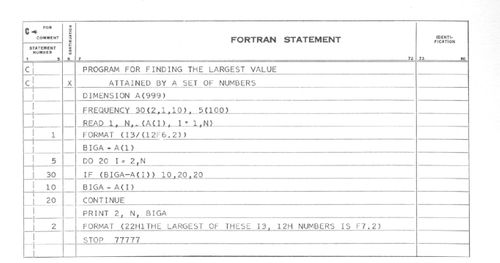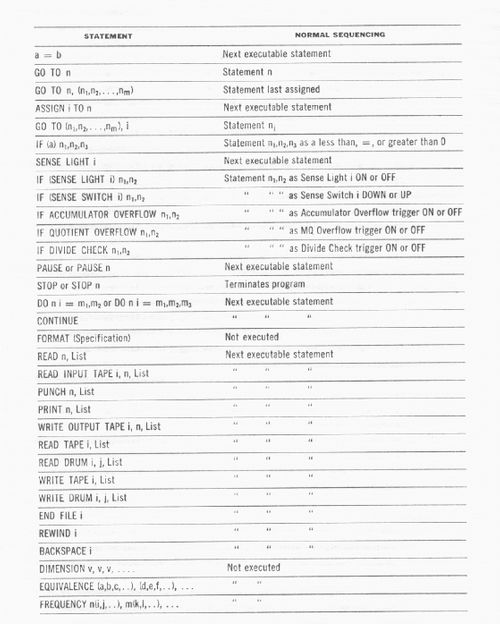 |  | 

To give you some idea of the state of the art when Lisp
was invented, these two images are taken from the first Fortran
manual, published in October 1956. Fortran was not
then called a programming language; the manual describes
"The FORTRAN Automatic Coding System for the IBM 704 EDPM."*
What was automatic about it was that you didn't have
to write machine language. The FORTRAN system
would do it for you.
I have heard that the inventors of Fortran did not initially expect
the same language to be used on different types of
computers, or to have multiple languages available for
the same computer. Each computer would have its own
"automatic coding system" (since they would
each have their own instruction sets) and this was to be the 704's.
Fortran I was very simple. Programs were flat: the language
does not seem to have supported
subroutines or nested expressions. The Fortran if
was a conditional goto.
It was partly to overcome these limitation that
McCarthy
developed Lisp.
The statement for reading
in a stack of cards is impressively terse.
Reminds one of Perl. (Common) Lisp is embarrassingly
inferior here.
The mysterious Frequency statement is optimization advice to
the compiler about the likely outcomes of conditionals.
It apparently proved useless and
was dropped from the language in Fortran II.
|
 |  | Sample Fortran Program

|  |  |  | Fortran Statements

|  |
* An EDPM I would guess to be an Electronic Data Processing Machine,
or Computer. It is an IBM tradition to make up cryptic
acronyms for common things. Disks still seem to be called DASDs
(Direct Access Storage Devices) at IBM.
|
|


